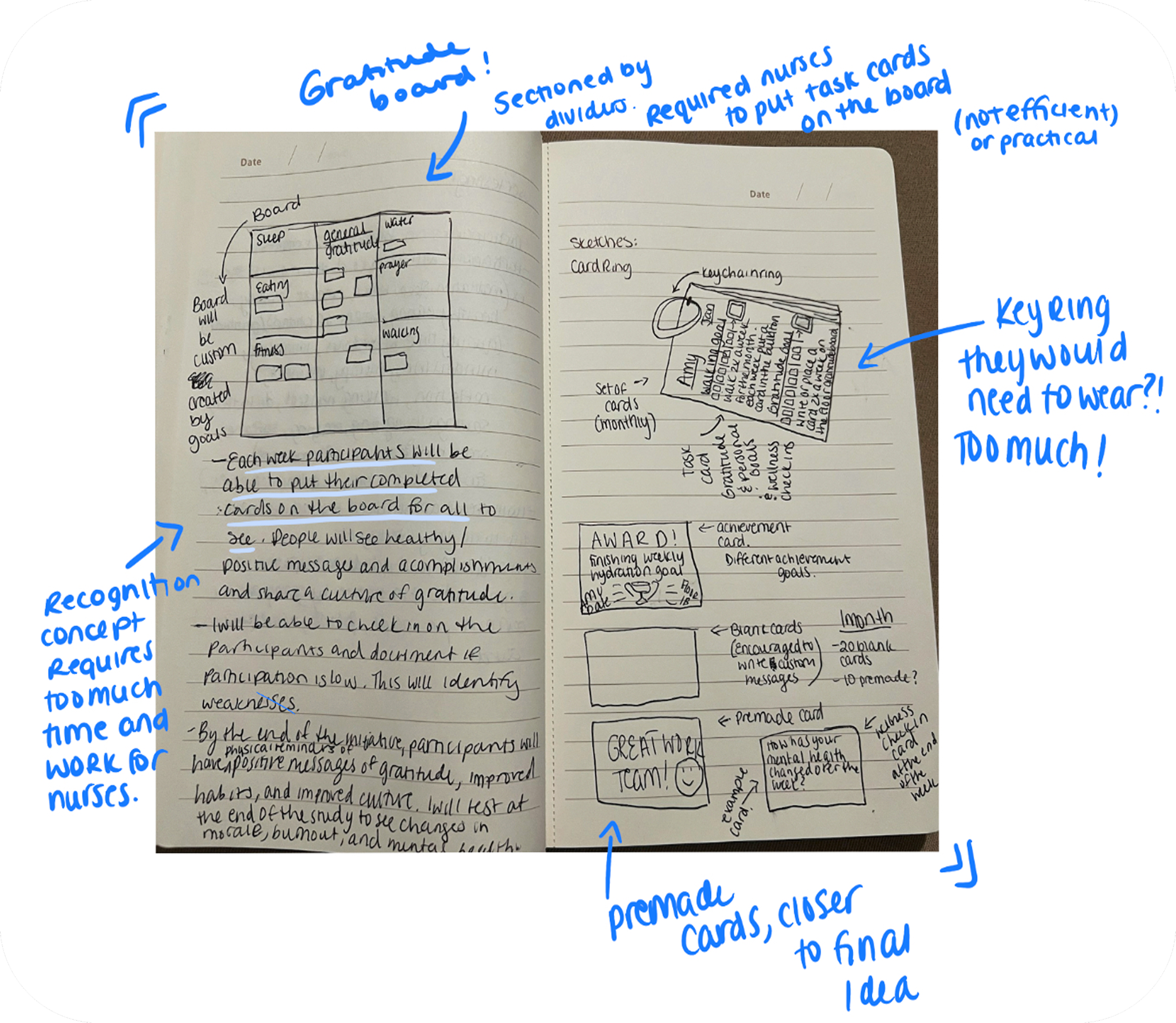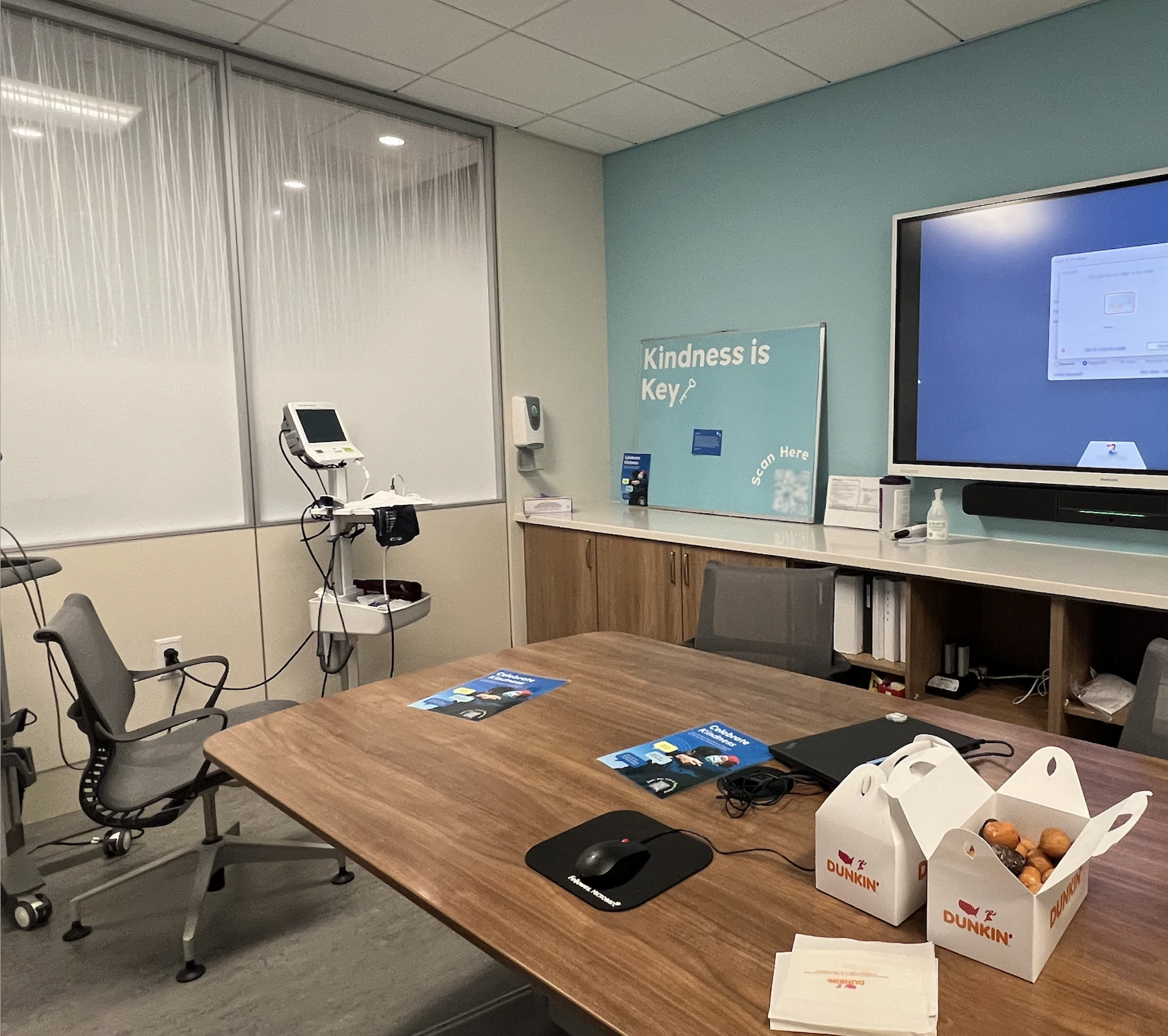Shaped by the Compassion of Nurses and Medical Staff In My Life
Influenced by my mother and friends who experience burnout and related nurse turnover, I volunteered at The Valley Hospital in Paramus, NJ to research and design a gratitude recognition solution tailored to their needs.
Thank you to The Valley Hospital, Brianne De La Rosa, Jordan Minnema, and the dedicated clinical staff for your invaluable support.
The Methods Behind Recognition That Lasts
Holistic clinical institutions recognize that supporting staff well-being through recognition practices enhances job satisfaction, reduces turnover, and improves patient care outcomes. Existing solutions, such as The Daisy Foundation, gratitude boards, and employee recognition platforms, highlight the importance of acknowledgment in healthcare settings. For my research, I analyzed the design, functionality, and impact of these existing solutions to understand industry standards and best practices. Just as important was learning from the user perspective, how staff feel when receiving recognition, and what makes those experiences meaningful.
Current Solutions, and New Ideas
With guidance from floor managers and experience coordinators, we developed a plan to build upon the hospital’s existing digital gratitude system. By printing recognition notes and displaying them on a physical public recognition board, we created a hybrid model that emphasized visibility and collective acknowledgment. The hospital’s current system (“As-is”), provided a baseline for this pilot. We collected note cards over the course of a month and used them to prototype a future (“To-be”) model, one that centers public acknowledgment as a defining feature of staff recognition.
Onsite Research at Valley Hospital: Insights from 40+ Medical Staff
From December to January, I conducted research onsite at the Valley Hospital in Paramus, NJ. The goal of the experiment was to design and implement a public recognition board, along with supporting materials such as flyers and custom recognition cards.
To prepare, I gathered all necessary supplies—including a display board, colored paper, and a laminator—in accordance with hospital guidelines. I set up the materials in the team room and launched the initiative by sending an introductory email and a survey to engage staff and initiate participation.
A Public Recognition Experiment
The recognition notes, sent to me by floor managers, were designed and printed to publicly appreciate the nurses.
Trial and Error: Something I Learned
To explore whether nurses might prefer a mobile version on their hospital phones, I tested the process using a Microsoft Form and QR code. The minimal submissions through the QR option revealed that staff were far more accustomed to submitting notes from their desktops.
Understanding Users through Research Methods
The on-site research provided firsthand insight into nurses' daily environment, interactions, and discussions related to recognition in the hospital.
All research directly informed the creation of user personas and guided key design decisions.
Observational Research
The observational research was informed by insights from the recognition board, conversations, trends, and my own trial and error.
Survey With 27 Responses
An initial survey via Microsoft Teams gathered insights on positive recognition and their existing digital gratitude system, evaluating engagement, usability, UI, and overall convenience.
6 Interviews With Staff
I conducted user interviews with nurses, floor managers, experience coordinators, and HR personnel, focusing on their experiences with the existing digital gratitude system.







